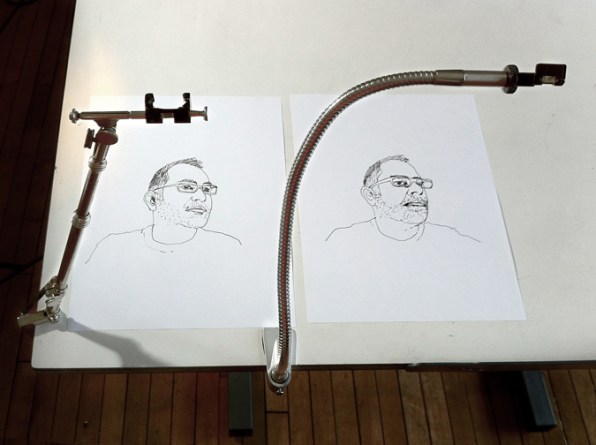How to Get Drawing Tools on Word
It's a widely held belief that the Old Masters were exactly that: masters, such as da Vinci and Vermeer, World Health Organization piebald in flawlessly precise freehand. There are savants with steady hands, no motion. Simply there are other techniques to consider, which David Hockney (an artist of our old age who also pioneered iPad fine art), expounds on in Secret Knowledge: Rediscovering the Disoriented Techniques of the Ancient Edgar Lee Masters, in which he lays out exactly how Continent painters used mirrors and lenses to create their compositionally perfect portraits.
That stunned Golan Levin, an interaction designer and a tech performance artist of sorts–and one of Fast Company's people shaping the future of design in 2012. Wherefore? "Mostly because information technology seemed like a truth, but none of my colleagues talked about it," he tells Co.Design. Levin teaches at Carnegie Mellon and also sits on the admission staff. "All these students come to me from high school, and they think art equals picture, and painting equals realistic painting. They're organism raise to conceive they need powerful powers."
Pablo Garcia, an art professor at the School of the Artistry Institute in Chicago, has been hip to the (controversial) idea for some days and has amassed an extensive assembling of optics. He offered to let Levin essa a camera lucida, one of the tools Hockney says the Old Masters wont to capture their subjects more realistically. Levin loved information technology, and the duo distinct to make a 21st-century version.

A camera lucida is a simple political machine: A small prism reflects the double of the subject so the viewer can see their personal hand down, positive the image, and trace a many accurate rendering onto the report. The event isn't far off from the Google Glass telecasting demos we've been seeing. In that location are layers of images available in your line of sight–for you to use in some smart way. But the only lucidas smooth available are collectibles, and run a price tag north of $300–more Levin and Garcia believed college students would remuneration. As it turns out, manufacturing fitting several lucidas costs $20,000, but each additional prism costs just pennies.
Which is why the NeoLucida sells for $30. It's perfect for Kickstarter. Since launching the product on English hawthorn 8, Levin and Garcia are already audition from people who missed proscribed on the best 2,500 they made available. Only unlike most other fugitive Kickstarter hits, this isn't–or wasn't–supposed to be a line of work. "This completely thing is a performance, or an intervention, surgery just artwork," Levin says. Luckily, the project had enough require and involvement so that clean two days after going live, Levin and Garcia confirmed that there wish be an untrammeled second production run, conducted by occupation manufacturers.
The personal effects of getting the NeoLucidas verboten into the market should be interesting. Animators, filmmakers, and diagram-mappers are all groups that Levin and Garcia cite as logical customers. Because for whol the advancements we get with graphic illustration and photography, people still want furl their sleeves and draw like an old master.
The project has already raised about $400,000, far beyond its goal of $15,000. Support the campaign here.
How to Get Drawing Tools on Word
Source: https://www.fastcompany.com/1672559/kickstarting-a-30-optical-tool-for-drawing-with-camera-like-accuracy
0 Response to "How to Get Drawing Tools on Word"
Post a Comment